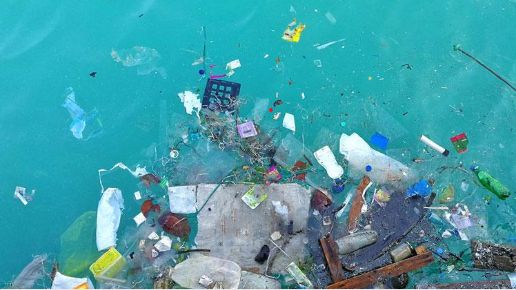Self-Sustaining Ocean Cleanup
The Problem
It took less than two decades for plastics to become notable marine contaminants following their initial commercial introductions. In the ensuing five decades, annual global plastics production has increased 500% . Now, we know that in addition to marine-derived sources from fishing, aquaculture, and shipping industrial sources, plastic debris in the oceans comes from terrestrial sources, exported by nearly all the major rivers of the world, These plastics are long-chain polymers that are extremely durable in the environment, which is in part, why they become troublesome pollution. In the environment, they are frequently mistaken as food by fish and wildlife or they create entanglement hazards. By some estimates, 100,000 marine mammals die every year from ingesting plastics. In addition, untold millions of birds and fish suffer mortal consequences because they eat or are entangled in floating plastic, and more than half of all sea turtles have eaten plastic. In the North Pacific (Great Pacific Garbage Patch), it is estimated that fishes near the surface eat 12,000 to 24,000 tonnes of plastic every year. In addition to direct morbidity and mortality caused by eating plastic, the less observable, and lesser-known delayed consequences such as reduced reproductive success in these organisms are extremely worrisome and should be researched further. Nonetheless, it is clear that plastic debris in the ocean has created a conservation biology emergency.
Our Proposal
One of the characteristics of plastics is that they have lots of energy stored in their long, polymerized molecules. Owing to that, we can convert the plastics to both thermal and stored electrical energy through high-efficiency gasification. In our vision, a fleet of autonomous harvest vessels (sweeper drones) work in conjunction with a manned mothership. The sweepers continuously broadcast their positions and plastic debris exploitation rates to the rest of the fleet, and to the mothership. Mathematical optimization algorithms determine if a sweeper drone’s cleanup efficiency could be improved by changing its location and path in order to exploit higher density plastic debris patches. All of these calculations are based on real time observations of plastic debris density, and driven by optimal foraging theory, borrowed from the early mathematical ecology literature. In addition, we will integrate other sustainable sources of energy (i.e., wind, wave, and solar) to supplement the electricity needs associated with navigation, communications, computers, and those associated with processing the plastic debris.
We Assume that...
We assume that gassification, syngas turbines, steam generation, and perhaps hydrogen fuel cells, combined with wind, solar, and wave power can provide sufficient electricity to run the cleanup.
We assume that Global Ocean Cleanup Credits can be marketed successfully to create a sustainable funding source for implementation.
We see this project as a complex synthesis problem where no new technology needs to be invented.
Constraints to Overcome
All existing attempts to clean up plastic debris in the oceans is dependent on recycling the material. That is a flawed economic model in several ways. First, for more than 90% of plastics, there is no existing recycling technology. Second, empty vessels need to steam out into the ocean to collect the plastic which will then be brought back to land where most of it will be placed in landfills. We are currently constrained by the scalability of gassification plants in order to develop a proof of concept model. In addition, there are many challenges associated with working at sea. All of these will need to be addressed prior to deployment.
Current Work
1. Funding solicitation 2. Technical team building 3. Technical plan development 4. Prototype development
Current Needs
1. Powerplant engineering 2. Maritime engineering 3. Mathematical optimization/ computer programming 4. Communications engineering 5. Office space
